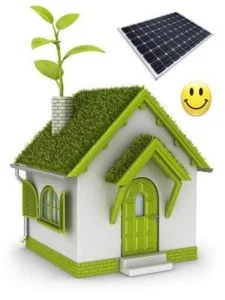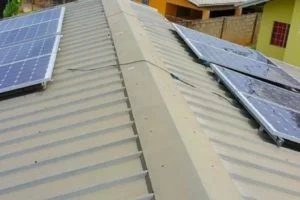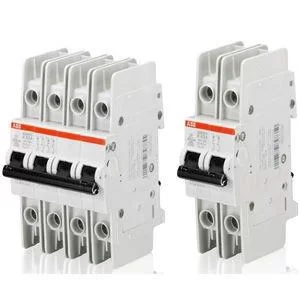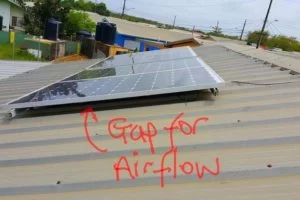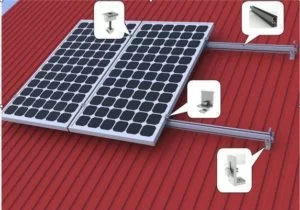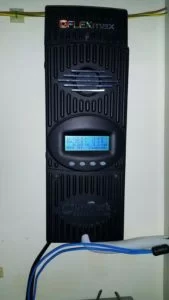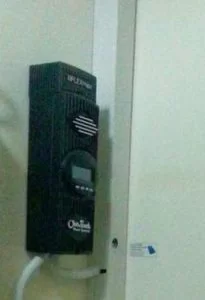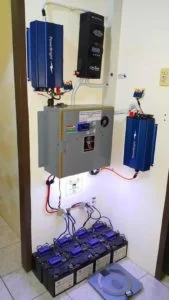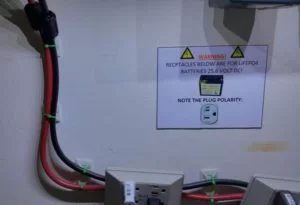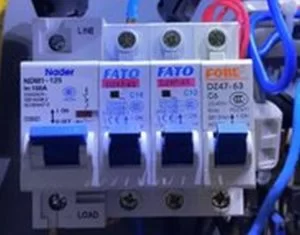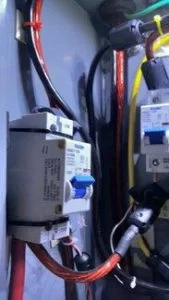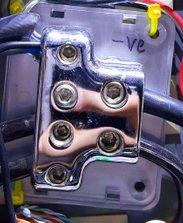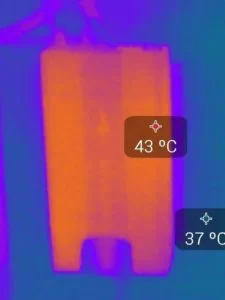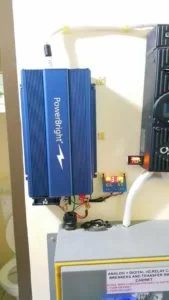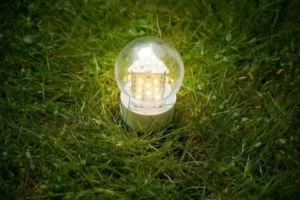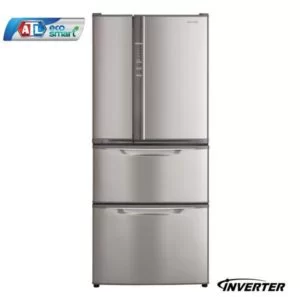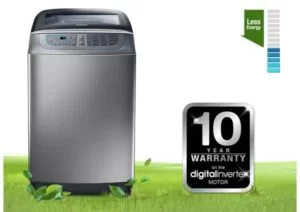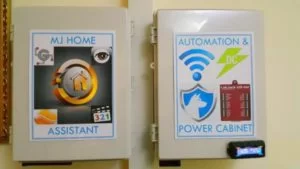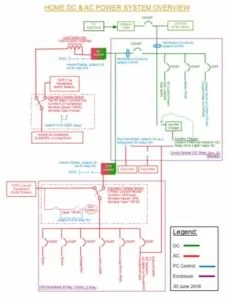My home has been solar-powered since June 2013 and the power system has proven its reliability. I’m a proud owner of an OFF-GRID solar power system. I decided to publish this instructable to let fellow DIYers know the basics to design and install a system such as mine. Dont expect an exact copy of my system if you decide to go this route. You need to know your home layout, load demand, budget constraints and future power requirements.
During this instructable I will use basic electrical terminlogy.
Notes to remember in this instructable:
1. My country does not permit grid tie. I cannot provide technical help on grid tie questions.
2. The entire design and installation I performed myself. In your case you will either need to be competent in electrical installations or hire an experienced electrical professional to do it.
3. I have fulfilled code (NFPA 70, TTS-171 Part 1) and power utility requirements.
4. Owning a power harvesting system means you are responsible for it. You can’t expect to always call someone should there be issues during operation. Take control!
5. This is technical only instructable. I shall not answer financial questions.
Now let’s continue on how I implemented my off grid power system. Remember when it comes to solar, the BIGGER the BETTER!
Step 1: Calculations!
I installed my panels on the roof of my home. There are OEM mounting kits for this or you can make your own with metal or rigid PVC. I actually did a mixture of both. I have a total of 8 panels, each rated at 225Watt.
Cables:
Sizing of cables (AC and DC) is very important to have as low a voltage drop as possible. For my home I used 2% maximum voltage drop from any supply Breaker to the furthest load. You can use a more tighter requirement and its no problem; your cables will have to be sized larger. The attached chart is an example I used however remember PVC insulated cables dont carry as high an amperage as XLPE. Also there are other types of insulators and temperature ratings for them all. Consult your cables’ datasheets or simply use the worst case scenario charts. Also stick with copper conductors please.
For simplicity I refer to the AC ampacity chart to indicate what wire sizes to use. Please note that DC ampacity for the same cable is higher due to the fact there is no SKIN EFFECT for DC. Take for example the wiring in cars. For the headlamps, alternator, starter etc. notice the cross sectional area difference for the equivalent amperage on an AC system. Using the AC chart for DC cable sizing means you will have a lower voltage drop which is good.
A basic guide I have used well over the years is 5amp per mmsq of copper cable. My cable runs are less than 100ft and that estimate has worked out great. For example if I needed to pass 50amp dc then I would use a 10mmsq copper conductor. For longer runs, the cable chart would be recommended.
Breakers:
Molded case breakers are typically permitted to run a maximum continuous current of 80% their nameplate rating (unless its a 100% rated Breaker). Breakers for DC are differently rated than AC Breakers. Should you wish to use an AC rated Breaker for DC service, the general rule is the maximum DC voltage is 1/5th the AC voltage rating on the Breaker. Exceeding that limit means the breaker will not properly extinguish the arc during opening operations. Always check the cutsheet for the Breakers you select to verify operation at DC. Also dont oversize your Breakers else you defeat your protection (eg. 15A breaker for a 2 amp load).
Solar Panels:
I used a rule of 4 hours usable sunlight to size my panels. The energy demand for a 24 hour period needs to be determined. You can either use the utility energy meter and average your usage during the week or use standalone meter. The power utility meter is the easiest method.
For example if you use 1000Watt-hours of energy for a 24 hour period, then the panels you need will be (1000/4 =) 250Watt of panels.
You can assume 6 hours or more of usable sunlight to carry your cost down but I prefer more power to provide for my needs.
Batteries:
The Watt-hour demand for a 24 hour period is the minimum size the battery bank should be. Battery watt hour is volts x amp-hours. A larger battery bank means better voltage regulation at the input terminals of your DC loads eg. inverters, DC lighting, DC Fans etc.
Step 2: Installing the Solar Panels.
I installed my panels on the roof of my home. There are OEM mounting kits for this or you can make your own with metal or rigid PVC. I actually did a mixture of both. I have a total of 8 panels, each rated at 225Watt.
The optimum angle for installation varies around the world. For me it’s 15degree from horizontal so mounting directly on the roof worked out great for me. I have panels facing the east and west to capture the sun from dawn to dusk.
It is a good idea to install the panels where you can access them for cleaning but for the most part they are maintenance free and have long service life (20+ years). An interesting side effect of the panels on my roof is the shade they provided actually made the house a bit cooler. Mind you I have a single level, 3 bedroom home (not big but its my home).
https://www.instructables.com/id/Maintenance-cleani…
If you have alot of shade from trees then you need to address this first or have an alternate location to harvest sunlight from dawn till dusk.
I made a penetration in my roof’s sheeting and ran the power cable through it. I put strain relief and lots of silicone on the penetration. The panels are actually installed over that penetration so water ingress is not a problem.
If you wish, you can install a sun tracker for maximum harvesting. These are expensive and should not be installed on roofs. Why? Strong enough wind blows and your roof will suffer if it hasn’t already from the weight of the tracker and panels. Trackers also require maintenance so these pointers you need to keep in mind.
Step 3: The Solar Charge Controller.
I originally had a morningstar MPPT 60Amp controller but it failed after a month in service. I just threw it in the garbage, angrily, warranty be damned. I have in service since mid 2013, an Outback MPPT FM80. I firmly trust this controller and will recommend it anyday. I also recommend MPPT type rather than PWM to get more energy into the battery bank.
You can have multiple charge controllers into the same battery bank. Each controller will need to have its own set of solar panels.
The outback FM80 can accept up to 150VDC so I wired 4 of my panels in series. I have a parallel connection of two of those strings and this is fed into the outback. My outback is currently maxed in this configuration. Always know the maximum open circuit voltage for your panels to know how many can be wired in series to your mppt charge controller. Never exceed the maximum input voltage to the mppt (you know what will happen!).
Using an MPPT controller means you can use smaller cables to deliver the power into the controller.
It is important to have a Breaker before the input to the outback for protection and maintenance.
Here is a free piece of timeless advice; the breaker to the battery bank needs to be turned off last and also it has the be the first one to turn on. Why? If solar power is present on the input without battery control power, your expensive charge controller will go bye bye! Trust me I know!
Step 4: The Battery Bank.
I used lithium iron phosphate (Lifepo4) to store the harvested energy. It’s a 25.6v 160amp hour bank.
The details on this bank is covered in my instructable below:
https://www.instructables.com/Solar-Battery-Bank/
Generally the higher the battery bank voltage the better once you can get a compatible inverter.
It’s critical to have short circuit protection for each battery or battery string. A circuit breaker is a good means of doing this. Also for maintenance or upgrades, throwing a breaker off will facilitate this. Don’t ever wire up a battery bank without protection!
LifePO4 has no toxic components, offers long service life (more than 2000 cycles@100%DOD according to the manufacturer), does not vent gasses, offers 4 times the power density at a third the volume compared to lead acid. Its perfect for installation in living areas. I personally overcharged a LifePO4 cell for 5 weeks and all that came out was brown electrolyte. No burning, gassing, irritating smell. I truly love this battery chemistry!
Also people, please don’t use SLI batteries. These are shallow cycle and used only to start engines. You Want deep cycle batteries. Lifepo4 batteries are actually suited for both uses but it’s up to you to decide what Your budget can provide. Lead acids are cheaper up front but don’t have good lifespan, safety, environmental impact or discharge characteristics as Lifepo4.
Our recommended battery bank.
Step 5: DC Wiring and Breakers.
I used flexible cables to route power to and from my battery bank. These type of cables are easily obtained from electronic stores or even car audio shops. Again the larger the cable to better however don’t go so large that the wire cannot fit in a breaker or connecting lugs.
The breakers I used are DIN rail mounted type. These are quite low cost from Amazon. All my DC breakers are single pole. The negative of the DC power system is tied to a shared connection point. Only the positive is protected with the breakers.
Step 6: The Inverter.
Most household appliances and loads use AC voltage Whether it’s 120v or 240v. I strongly recommend using only pure sine wave inverters to power these devices especially those with motors.
Some 120v inverters such as the transformer-less type are more efficient but do not allow the neutral output to be connected to the neutral of your utility! The neutral output when measured to ground will always have a voltage difference. The utility neutral will be tied to ground and reads 0v between ground.
Basically when using 120v inverters with non zero voltage neutral (relative to ground) you will need to use a two pole transfer switch. One pole for live, the other for neutral. If you don’t have a utility supply to your home then you obviously won’t need a transfer switch.
Do not be tempted (transformer less inverters) to connect the neutral to the ground connection. The inverter will fail because of this (yes I know this first hand).
If you wish to avoid all that headache just buy the transformer type inverter and these would have a neutral output of zero volts. Read the manual for your inverter carefully!
Step 7: AC Panelboard and Transfer Switch.
The output from my 120v inverter I wired to a panelboard I built complete with an automatic transfer switch. Below is the instructable I published for that project:
https://m.instructables.com/id/DIY-Circuit-breaker-…
You can purchase a panelboard complete with transfer switch if you prefer but for my needs I preferred to build it.
The computer control of the automatic transfer switch ensures the loads in my home will have power should the battery bank voltage drop too low.
Having proper protection will keep everyone and everything safe in the event of a fault.
Here is a good piece of information. There are two ways to tie an alternate supply to your home.
1. A breaker interlock kit. This is basically a mechanical plate that prevents the main and a sub breaker from being on at the same time. This can be defeated and allow paralleling of two non sync sources! Very dangerous and I strongly recommend not using this method even though it is low cost.
2. A transfer switch physically allows only one of two sources to send power to a load. There is no possibility of paralleling here. Very safe and robust.
Step 8: Energy Efficient Loads.
Having all my lighting as LED helped greatly. I still have my standard refrigerator and washing machine. If at some future point those fail, for sure I’m gonna get me the inverter versions of those appliances for better energy savings.
All TVs in an off grid home should be LED. Even the computers should be the low wattage type even for desktops.
Most importantly is the human mindset. Use your energy sparingly. Dont assume there will always be energy available. Be wise and economize.
Step 9: Enjoying Off Grid Living and Planning for the Future!
For the most part I live off grid although I have the ability to use utility power when I need it, especially for large intermittent loads. To make life simpler and more enjoyable, I automated my entire home to handle all solar loads.
An installation like this is a long term investment and will pay off for itself. In my country electricity is very cheap so the payoff period is extremely long however I did this project as a labor of love and not really to have financial savings.
If you are nomadic and move around then this instructable may not be for you, unless you live in an RV or boat. I recently installed a small wind turbine generator to augment my harvesting capabilities. Check it out!
https://www.instructables.com/id/Installing-a-wind-turbine-to-power-my-home/
Using green energy rules!
Source: Solar Powering My Home!
